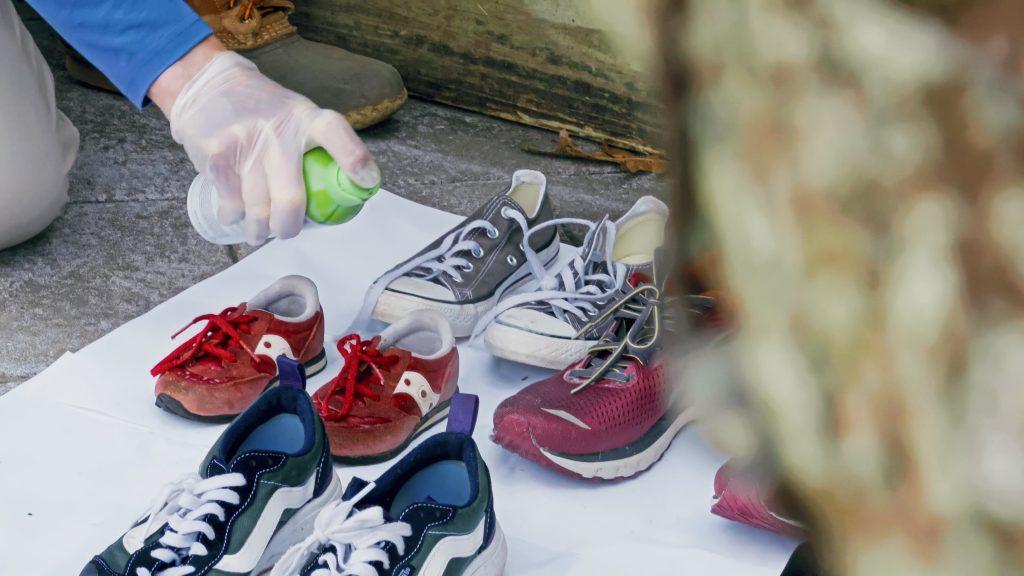
Summer has officially arrived and families are enjoying time outdoors. Unfortunately, ticks are out in full force as well. Tick expert, Dr. Thomas Mather and Equip-4-Ticks Resource Center have compiled helpful tips on how to conduct a proper tick check on yourself, kids, and pets and information about what to do if you or a family member gets bitten.
Perform tick checks on yourself and kids from the ground up
After spending time in a tick habitat, it’s important to do a thorough tick check. While many recommend checking from head to toe, Dr. Mather recommends checking from the lower part of your body first and then moving up, because that’s how ticks move, from the ground up.
Places to check for ticks:
- Between toes
- Behind knees
- In the groin area
- Around waistline
- In the belly button
- Inside elbow joints and armpits
- In and around the ear
- Around the hairline
- On the scalp
It’s especially important to check areas where your clothing meets, or binds closely to, your skin. Ticks will crawl to those areas and won’t be able to, or want to, go any further, and they’ll bite there.

Do a tick check on your pets
Once you’ve finished doing a tick check on yourself, it’s also important to perform a tick check on your pet. On a pet, the head region is the most important place to look for ticks. Ticks will also end up on other areas of dogs, or cats. Make sure to check all places where a tick could get caught up in its fur or the crease of its skin.
Places to check your pet for ticks:
- Paws and between toes
- Between back legs
- Between front legs
- Under the collar area
- In or around the ears
- Head region
- Base of the tail
Bitten by a tick? What to do next.
Finding a tick on yourself, your family member, or your pet can be scary. While it’s vital to remove a tick as soon as possible, it is also important to ensure that you do it properly, and that you take the right steps once it’s removed. This includes storing the tick, and sending it in for testing in case it is carrying a dangerous tick-borne disease like Lyme, or a dangerous allergen like Alpha-gal.
1. Remove the tick
According to tick expert, Dr. Thomas Mather, the best strategy for removing a tick is by using fine-tipped, pointy tweezers like the ones from TickEase. By having something with a very pointy tip, you are able to get as close to the skin as possible and pull the tick out.
How to remove a tick:
- Hold tick with fine-tipped, pointy tweezers
- Get as close to the skin as possible
- Pull straight up in a slow, steady motion
2. Keep the tick in a plastic bag
After removing the tick, don’t throw it away. Instead, place it in a Ziploc bag. Most people won’t know how to identify what kind of tick it is, and if you don’t, you won’t know what kind of diseases it may be carrying.
3. Identify the tick
Next, take a clear photo of the top side of the tick, and send it to TickSpotters, where Dr. Mather and his team will identify it for you within 24 hours with the following information:
- The kind of tick it is
- How long it was attached
- And what kind of germ it likely, or even didn’t likely, transmit to you
4. Send the tick in for testing
After the tick has been identified and TickSpotters has let you know if the tick that bit you has a high chance of carrying a disease, you can choose to send in the tick to a testing facility.
It should be noted that while tick testing can be a helpful resource, it should not be used as a substitute for physician diagnosis of disease.
If bitten, it is vital to remove the tick quickly and properly. Equip-4-Ticks shares the important steps to removing a tick safely, what to do with the tick once removed, how to get help with tick identification via TickSpotters, and where to send the tick to have it tested for Lyme disease.
_________________________________________________________
About Equip-4-Ticks Resource Center
Equip-4-Ticks Resource Center, a collaboration between tick expert, Dr. Thomas Mather, PhD and Insect Shield Repellent Technology, was launched to offer tips, informational content, and a comprehensive video library to help the public stay protected from ticks and the dangerous diseases they may carry.
About Dr. Thomas Mather, PhD
Dr. Mather (a.k.a. “The TickGuy”) joined the University of Rhode Island in 1992 from the Harvard School of Public Health, and now serves as director of URI’s Center for Vector-Borne Disease and its TickEncounter Resource Center. His research focus is on tick ecology, area-wide tick control strategies, tick-bite protection, and tickborne disease prevention. His research and outreach programs are diverse, including anti-tick vaccine discovery projects, evaluations of targeted tick control strategies, tickborne disease risk prediction, as well as development of tick-bite protection decision support tools and social networking strategies for tickborne disease prevention. His work has attracted funding from a wide variety of sources, including the National Institutes of Health, Centers for Disease Control and Prevention (CDC), the US Department of Agriculture, the National Science Foundation, the Environmental Protection Agency, and the US Agency for International Development.















